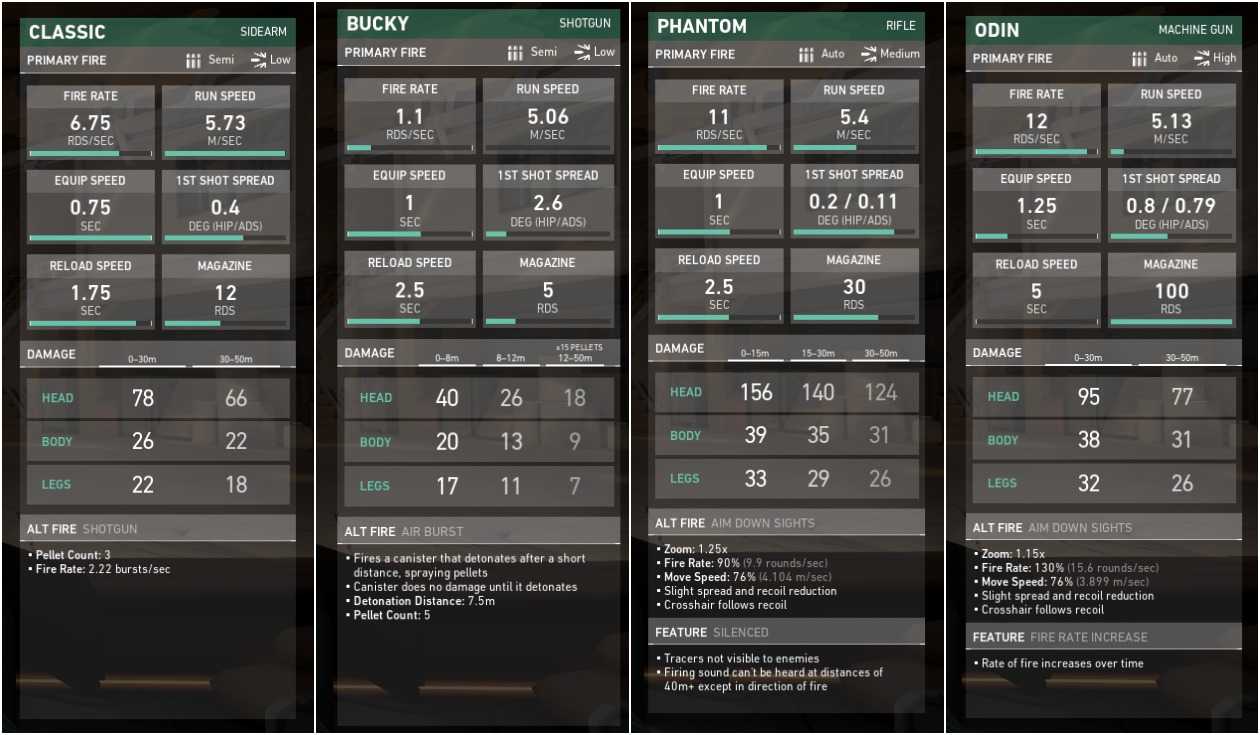And after two amazing Deathmatches, you can’t help but think “I’m on fire today!”; so you hop to the competitive queue confident that you could finally hit plat. 3 minutes later, you find yourself on the agent selection screen instalocking Reyna since you were the headshot machine just a few moments earlier and would just pop some heads in-game; the win was guaranteed. Your doom, however, already starts in the first round of the game when you ego peek B-Link from A-Link and receives a Raze ‘nade in the face. Six rounds later, after a series of ‘unlucky’ events, you find yourself at the bottom of the scoreboard, no kills in your K/D. Frustrated; you lose your confidence, and the match, after being flamed by your entire team.
When you first think about what makes a Valorant player good, be it your neighborhood friend or a pro player, in the game, it isn’t his utility usage or team leading skills that come to your mind, but his aim and gunplay. After all, while there are a ton of other aspects in the making of a good shooter game, it’s undeniable that their very core is in the gun duels that it provides. However, at least in Tactical Shooters like Valorant, at the end of the day, there is only so much you can do only with raw aim.
To illustrate this in Valorant scenarios, take these three examples: first, a long-range fight, but the player only has a Judge in his hands; second, a wide swing that exposes him to three different enemies in three different positions; last, a corner being cleaned with utility, causing tons of damage without a single bullet being fired. In all of these scenarios, even with a god-like aim, it would be impossible for a player to have the upper-hand; all of these situations were too one-sided for said player to have a chance. So, what should we do to avoid these situations? Well, this is what we’ll talk about in this article: knowing how to better choose your duels and stop putting yourself in these disadvantaged situations.
First Step: Positioning
Before the shooting even starts, it is necessary to talk about an aspect often overlooked: positioning. While this can be seen as something trivial that can be learned just by playing the game, actively thinking about your positioning in-game is the first step in making duels more favorable to you. Keep in mind that even if the subject of positioning can be quite extensive, for the sake of a more cohesive article, here I’ll just briefly discuss a small part of the topic directly connected to choosing gunfights: said part being your position related to the utility wielded by the enemy team and the weapon you have in hands.
For the first part, thinking mainly on the defensive situations, be it on the Defender side or during a retake (since it is in these moments where good positioning shines the most), it is necessary to pay attention to the enemy composition, and how is their situation regarding their utility. Different compositions will have different approaches in playstyle and gaining map control, and you have to have this in mind when positioning yourself. A nice example of these differences can be seen in the fight for control over Hookah on Bind, where you can’t have the same response, and positioning, for a Raze trying to gain space with her boombot and grenade, a Skye with her falcon and wolf or even a Brimstone with his ultimate up.
Next, it is necessary to have some thought in the weapon you have in your hands and the angle you are holding (for a nice explanation on how angles work in Valorant, you can see this article written by Michael Kelly). While this can be extremely intuitive if you already have some experience in shooter games, it is interesting to notice that some guns may be more versatile than their first appearance show, the Bucky with its right-click being the best example (who would think of holding a medium-range angle with a shotgun). Normally you end up learning which weapon to use and alternatives to different angles through playing, but you can always take some time to see the gun stats in the shop in-game widow if you want more details or want to theorize something completely new, like when we first saw wallbangs being used in Ascent.

Another thing that needs attention is your rotations. Depending on the gun you’re wielding, it is better to avoid certain paths while you rotate or try to flank. A good example can be found on Icebox: there, if you start the round holding a close angle while defending with a Judge, be it on A or B, pushing into the attacker’s spawn will normally put you at a huge disadvantage in any duel that you may find yourself in since you don’t have close quarters in that part of the map.
Second Step: Should I Go for the Duel?
Now that we talked about the importance of your positioning when looking for gunfights, it’s time to talk about choosing when you’re going for duels. We’ll, however, start with when you should NOT go for the fight since it can help better comprehend the timings you’ll be looking after when pushing for the gunfight.
So, when should you NOT look for or swing at gunfights? Here, the rule of thumb is to get away from situations that can put you at a disadvantage (this is also the reason why we needed to talk about positioning before this segment of the article). You can also think of different types of utility, like flashes or stuns; angles, and longer or shorter distances, that doesn’t make the gun on your hands effective, ego peeking into an Operator with a Specter on Ascent’s mid for instance; fights with more than one enemy at the same time, the famous 1v2, 1v3, etc. There is always room for unusual plays that escape this rule if you are trying to find your opponent off guard, however, they shouldn’t be used as the norm since you are using the lack of your opponent’s attention as a way to cancel said disadvantages, and if expected it won’t work.
A supplementary recommendation is that your proactivity in searching for fights is directly related to the role you’re playing in your team and the moment of the round. Each game is unique and different people have different playstyles, however, if you are anchoring a site or watching a flank, for example, no matter if you’re playing Duelist or Sentinel, normally you don’t want to push forward looking for gun duels. On the same note, if the game is already a 5v3 for your team you don’t need to go for fights either. Knowing when you need to exert aggression or not in the game is an important skill that can bring you the win on many occasions; you can take map point in 100 Thieves’ comeback against Gambit on Icebox (map 2 of the MD3) in the last Masters Berlim as the prime example of the importance of this knowledge.
The Jump: Going for the Duel
If you read with attention the first two parts of the article, this last segment should present itself as a result of applying both of the Dos and Don’ts shown above. Basically, after excluding yourself from disadvantageous situations, and if you know your angles and positioning, you shouldn’t be afraid of taking any duel. Join this with a good mix of different types of peeking techniques (and if you’re not confident in this matter, you can go to this article written by Haam) and the only problem between you and top fragging will be your raw aiming skills.
Now, want to have an even better chance to secure the kill? Talk to your teammates and ask for help with utility. Here, your goal is to recreate the disadvantageous situations where your enemy is not comfortable in having the duel against you, stripping any chance they could have while fighting against you.
Conclusion
Although you can always pug your way up the ranks with pure raw aim skills, if you are looking to be a better player, knowing when to fight or look after a duel should be a pivotal part of your skillset. Including some thought in your gameplay is always a good thing to do, and while you don’t need to be the next clutch god, taking the time to judge how you’re going for these duels and improve in this aspect of your in-game decision making is definitely a game-changer.

